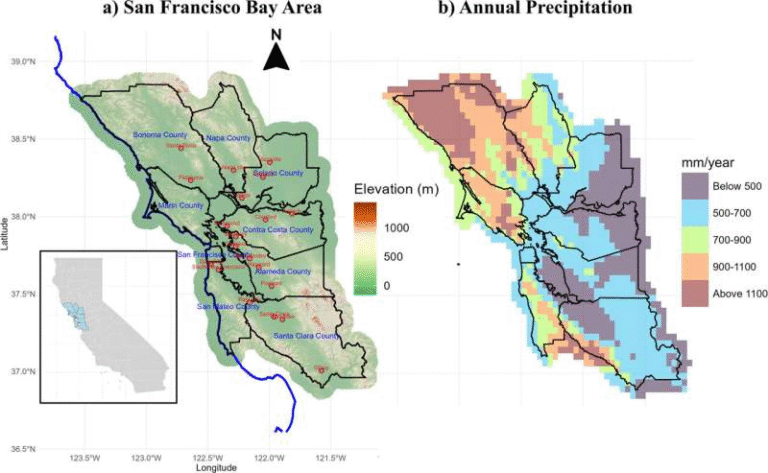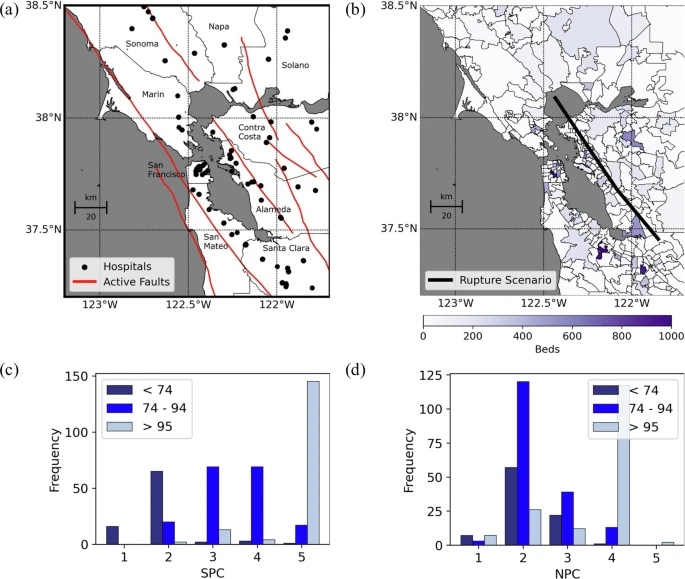Madagascar’s Landscape Rewritten by Time: How Ancient Rifts Split the Island and Shaped Its Life

Madagascar has long fascinated scientists for its incredible biodiversity — from lemurs to chameleons to baobab trees, most of which exist nowhere else on Earth. But a new study published in Science Advances reveals that the origins of this natural wonder lie deep in geological history. The island wasn’t just isolated by drifting continents — it was reshaped twice by massive tectonic rifting events that tilted the land, reversed rivers, and sculpted the terrain we see today.
According to researchers from ETH Zurich, Madagascar’s dramatic topography — steep escarpments, tilted plateaus, and contrasting east–west landscapes — was forged through two ancient rifts separated by nearly 80 million years. These colossal shifts didn’t just tear continents apart; they also set the stage for life to diversify and evolve in extraordinary ways.
Two Great Rifts that Rebuilt an Island
The story begins around 170 million years ago, when Madagascar was still attached to the ancient supercontinent Gondwana. During this time, the first great rift began to open, splitting Madagascar away from Africa.
As this separation unfolded, the island tilted eastward, creating a high western escarpment and a broad plateau that sloped gently toward the east. Rivers began flowing mainly toward the Indian Ocean, draining the island’s interior across humid eastern landscapes.
For tens of millions of years, Madagascar’s rivers, mountains, and valleys remained shaped by that tilt — until a second massive rifting event changed everything.
Around 90 million years ago, another rift opened, this time on the eastern side of the island. This rift pulled Madagascar away from India and the Seychelles, forming new oceanic crust and thinning the island’s lithosphere. But this second rifting didn’t just separate landmasses — it flipped the island’s slope.
The tilt reversed direction, from eastward to westward. This geological “see-saw” had dramatic consequences: rivers reversed course, erosion patterns changed direction, and a brand-new escarpment formed along the island’s eastern margin. What was once the island’s low side became its steep, rugged face.
Today, that steep edge forms Madagascar’s eastern escarpment, one of its most striking geographical features.
Rivers That Changed Direction
One of the most surprising findings of the ETH Zurich study is how drastically the island’s drainage system reorganized after these rifting events. The main water divide — the line that separates rivers flowing eastward from those flowing westward — actually jumped across the island twice.
When the island first tilted eastward after separating from Africa, the rivers flowed mostly toward the east. After the second rifting event, when the tilt reversed toward the west, those rivers either reversed direction or carved entirely new channels.
This complete hydrological reorganization left an indelible mark on Madagascar’s surface. Erosion increased on the newly steep eastern side, carving deep valleys and steep cliffs, while the western side slowly wore down into broad, low-relief plateaus. The result is the island’s signature contrast — a younger, dynamic east and an older, subdued west.
Over millions of years, these processes shaped a landscape that’s far from static. Erosion continues to remodel the island even today, making Madagascar’s terrain one of the most geologically diverse places on Earth.
The Geological Forces Behind It
So what exactly caused these enormous changes? The answer lies in the complex breakup of Gondwana, the giant supercontinent that once included Africa, South America, Antarctica, India, and Madagascar.
As Gondwana fragmented, tectonic plates drifted apart. Madagascar was caught between major rift systems — first between Africa and itself, then between India and itself. Each event stretched and thinned the crust in different directions, tilting the island’s base and altering its elevation profile.
Researchers used a combination of geomorphological analysis, plate reconstructions, and erosion modeling to piece together this deep-time puzzle. They also incorporated data from cosmogenic isotopes to understand erosion rates and surface exposure ages. Together, these tools helped reveal not just when the rifts occurred, but how they physically changed the island’s shape.
From Rock to Life: How Geology Drove Biodiversity
Madagascar is one of the planet’s top biodiversity hotspots — home to thousands of species found nowhere else. Over 90% of its mammals and reptiles and more than 80% of its plants are endemic. Traditionally, scientists have credited this uniqueness to climate and isolation — the island’s long separation from mainland continents.
But the new study adds another crucial factor: geological transformation.
When rivers reversed and new escarpments formed, habitats became fragmented. Species that once lived in continuous environments found themselves separated by new barriers — steep valleys, ridges, and rivers. These isolated populations evolved independently, giving rise to new species over time.
In this way, the changing landscape acted like a “speciation pump”, continuously generating biodiversity as erosion and uplift redefined ecological boundaries.
The researchers argue that Madagascar’s landscape evolution shows how geology and biology are deeply intertwined — a concept that dates back to 19th-century naturalist Alexander von Humboldt, who envisioned a unified view of Earth’s processes shaping life.
A Lesson for “Stable” Continents
Madagascar’s case also challenges a long-standing assumption in geology — that passive continental margins (the edges of continents not near active plate boundaries) are geologically quiet and stable.
Regions such as South Africa, Brazil, India, and Australia are often considered ancient and unchanging. But Madagascar’s story suggests otherwise. Even millions of years after rifting, these so-called stable regions can remain dynamic, their landscapes evolving through subtle tectonic tilts and erosion.
This insight reshapes how scientists view long-term Earth processes — and how they understand biodiversity patterns across the globe.
The Modern Landscape: A Map Written in Deep Time
Today, Madagascar’s landscape still bears the fingerprints of those ancient forces. The western escarpment has eroded into older, worn-down plateaus and valleys. In contrast, the eastern escarpment — facing the Indian Ocean — remains steep, young, and active.
Major rivers like the Marimbona River now carry vast volumes of water from the humid eastern escarpment toward the coast, following the tilt established tens of millions of years ago. The divide between eastern and western drainage continues to influence everything from rainfall patterns to vegetation types and soil fertility.
The geological scars left by rifting aren’t just visible in rock formations — they also determine where forests thrive, where rivers cut deep valleys, and even where species can live.
Beyond Madagascar: Global Implications
The study of Madagascar’s landscape evolution offers a broader message: Earth’s surface is never truly still. Even in regions far from earthquakes or volcanoes, slow tectonic shifts can reshape continents over immense timescales.
Understanding these ancient processes helps scientists interpret the landscapes — and ecosystems — we see today. It bridges the gap between geophysics and ecology, reminding us that life evolves in response to a restless planet.
For conservationists, this knowledge emphasizes that Madagascar’s ecosystems are not just biologically rich but also geologically unique. Protecting them means preserving a living record of Earth’s deep history.
Research Reference:
Clementucci, R., Willett, S., et al. (2025). Madagascar’s landscape evolution: A tale of two rifts. Science Advances. DOI: 10.1126/sciadv.adw6362





